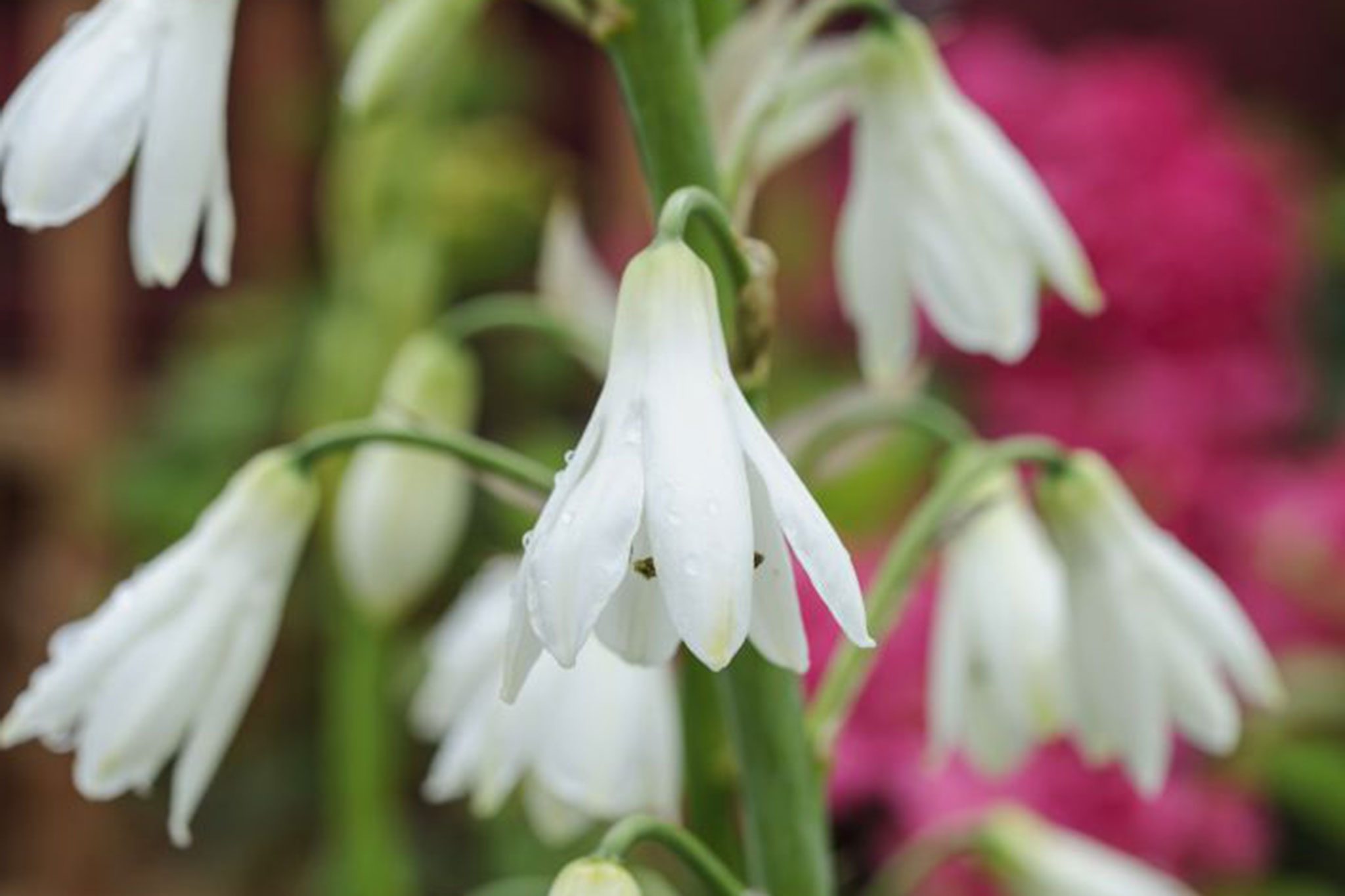
Galtonia, also known as summer hyacinth, is a stunning perennial bulb that adds elegance to any garden. Originating from South Africa, these plants are known for their tall, graceful spikes adorned with white, bell-shaped flowers. But what makes Galtonia so special? For starters, they thrive in well-drained soil and full sun, making them perfect for sunny borders or containers. They bloom in late summer, providing a splash of beauty when many other flowers have faded. Additionally, Galtonia is relatively low-maintenance, requiring minimal care once established. Whether you're a seasoned gardener or a beginner, these plants are a fantastic addition to any landscape. Ready to learn more? Let's dive into 29 fascinating facts about Galtonia!
What is Galtonia?
Galtonia, also known as summer hyacinth, is a beautiful flowering plant native to South Africa. Known for its tall spikes of white, bell-shaped flowers, it adds elegance to any garden. Let's dive into some fascinating facts about this stunning plant.
-
Galtonia is named after Sir Francis Galton, a famous 19th-century English polymath known for his work in statistics and genetics.
-
The plant belongs to the Hyacinthaceae family, which also includes the popular spring-blooming hyacinths.
-
Galtonia blooms in late summer, providing a burst of color when many other flowers have faded.
-
The flowers of Galtonia are fragrant, attracting bees and other pollinators to the garden.
-
Each flower spike can grow up to 4 feet tall, making it a striking addition to any landscape.
Growing Conditions for Galtonia
Understanding the ideal growing conditions for Galtonia can help ensure a healthy and vibrant display. Here are some key points to consider.
-
Galtonia thrives in full sun but can tolerate partial shade.
-
Well-drained soil is essential for Galtonia, as it does not like to sit in waterlogged conditions.
-
The plant prefers slightly acidic to neutral soil, with a pH range of 6.0 to 7.0.
-
Galtonia bulbs should be planted in the spring, about 4 inches deep and 6 inches apart.
-
Regular watering is important during the growing season, but the soil should be allowed to dry out between waterings.
Care and Maintenance of Galtonia
Proper care and maintenance can help Galtonia thrive and produce beautiful blooms year after year. Here are some tips to keep in mind.
-
Deadheading spent flowers can encourage the plant to produce more blooms.
-
Mulching around the base of the plant can help retain moisture and suppress weeds.
-
Fertilizing with a balanced, slow-release fertilizer in the spring can promote healthy growth.
-
In colder climates, Galtonia bulbs should be lifted and stored indoors over the winter to protect them from frost.
-
Pests and diseases are generally not a major problem for Galtonia, but keeping the garden clean and free of debris can help prevent issues.
Interesting Uses of Galtonia
Beyond its beauty, Galtonia has some interesting uses and benefits. Here are a few examples.
-
Galtonia is often used in cut flower arrangements due to its long-lasting blooms and elegant appearance.
-
The plant can be used in mass plantings or as a focal point in garden beds and borders.
-
Galtonia can also be grown in containers, making it a versatile option for patios and balconies.
-
The flowers of Galtonia are sometimes used in traditional South African medicine for their soothing properties.
-
Galtonia can be combined with other late-summer bloomers, such as dahlias and rudbeckias, for a stunning display of color.
Fun Facts About Galtonia
Here are some fun and lesser-known facts about Galtonia that might surprise you.
-
Galtonia is sometimes called "Cape Hyacinth" because it originates from the Cape Province of South Africa.
-
The plant's scientific name is Galtonia candicans, with "candicans" referring to its pure white flowers.
-
Galtonia was first introduced to European gardens in the late 19th century and quickly became popular.
-
The plant's tall flower spikes can sometimes require staking to prevent them from toppling over in strong winds.
-
Galtonia is deer-resistant, making it a good choice for gardens in areas with high deer populations.
Galtonia in Popular Culture
Galtonia has made its mark in various aspects of popular culture. Here are some examples.
-
The plant has been featured in several gardening books and magazines, praised for its beauty and ease of care.
-
Galtonia is often included in botanical gardens and public parks, where it can be admired by visitors.
-
The plant has inspired artists and photographers, who capture its elegant blooms in their work.
-
Galtonia has been used in floral arrangements for weddings and other special events, adding a touch of sophistication and charm.
Final Thoughts on Galtonia
Galtonia, often called summer hyacinth, is a fascinating plant with its tall, elegant spikes of white flowers. Native to South Africa, it thrives in well-drained soil and full sun, making it a favorite among gardeners. Its fragrant blooms attract pollinators like bees and butterflies, adding life to any garden. Despite its exotic origins, Galtonia is surprisingly easy to grow and maintain. Just remember to plant the bulbs in spring and water them regularly. They can also be a stunning addition to floral arrangements, bringing a touch of elegance indoors. Whether you're a seasoned gardener or a beginner, Galtonia offers beauty and simplicity. So, next time you're planning your garden, consider adding this lovely plant. It’s sure to impress with its graceful presence and delightful fragrance. Happy gardening!
Was this page helpful?
Our commitment to delivering trustworthy and engaging content is at the heart of what we do. Each fact on our site is contributed by real users like you, bringing a wealth of diverse insights and information. To ensure the highest standards of accuracy and reliability, our dedicated editors meticulously review each submission. This process guarantees that the facts we share are not only fascinating but also credible. Trust in our commitment to quality and authenticity as you explore and learn with us.
